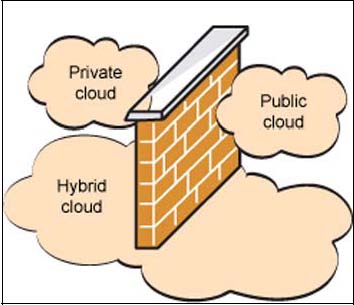Both the public and private cloud have their advantages. The public cloud offers virtually limitless space to expand and develop one’s business quickly, and it hosts a wealth of tools, applications and resources. The private cloud, meanwhile, is highly customizable and scalable, and it can host whatever a company would like without having to share it with the world.
But the debate between which is more valuable has become a moot point, thanks to the rise of the hybrid cloud. With the hybrid cloud you get the best of both worlds and are able to go between one and the other seamlessly.
The vast majority of businesses can benefit from this  hybrid approach in numerous ways. For interested parties, there is also a range of tools designed to make the hybrid cloud development process easier.
hybrid approach in numerous ways. For interested parties, there is also a range of tools designed to make the hybrid cloud development process easier.
The benefits of a hybrid cloud
A number of benefits accompany the development of a hybrid cloud system. Since some IT infrastructure exists on the public cloud, it’s worthwhile for businesses to take advantage of this and partner it with local offerings. For example, data stored locally can be migrated to the public cloud, where IT tools can perform analytical processing using those public cloud-based tools. Although not every hybrid user takes this approach, it’s a common one generally recommended to businesses.
We say “some” IT infrastructure is based in the public cloud because, ideally, not all of your IT infrastructure and resources will reside there. Local IT serves multiple purposes, particularly compliance and security, so you shouldn’t ever abandon the private cloud entirely without understanding what you’re giving up in IT. But you can mix-and-match various IT tools and processes between the private and public clouds, and through that tinkering you can determine which applications, tools, and data is best stored on which platform, developing an architecture to your IT infrastructure.
Ultimately, the percentage of your workload residing in the public cloud vs. the workload residing in the private cloud can vary according to multiple factors. As you get more established and your infrastructure stabilizes, you may prefer to move more data, tools and applications into your private cloud and leave the public cloud for short-term and/or emergency resources. But few experts will ever encourage you to abandon one entirely, because doing so creates unnecessary limits for your business.
Building a hybrid cloud
When it comes to building infrastructure in the hybrid cloud, tools and software can make the process much easier. You may be interested in monitoring services that let you view and manage the contents of both clouds simultaneously from the same console. Eventually, developing a system of automation can make the exchanges and collaborative processes of the two clouds arrange themselves in order of priority.
One such product making hybrid cloud management easier is the vCloud Connector. This plug-in, which comes from VMWare, allows both clouds to be monitored and managed easily regardless of location. The ease of use makes it possible for transfers to be completed seamlessly and allows you to constantly ensure that your cloud is providing IT service.
The hybrid cloud has recently received praise from multiple heads of businesses relying heavily on dual cloud operations to fulfill their IT servicing needs. Although public cloud servicers are constantly looking to pull data and other assets into the public sector, businesses would be wise to find a balance between public and private clouds.


